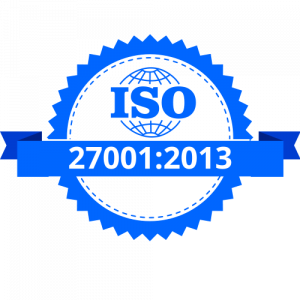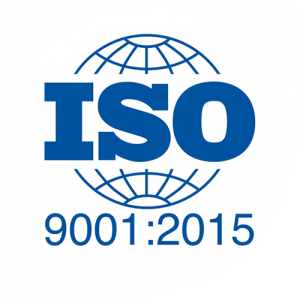
Top 5 Salesforce Automation Tools
Handling sales processes and customer relationships can be hard work. Salesforce and its automation tools have made things easier for many people. These tools help automate sales tasks and allow you to focus on building strong relationships with customers. However, with sales and technology changing quickly, finding the right Salesforce automation tools for your business can be challenging. To assist you, we have compiled some beneficial automation tools of Salesforce that you want to explore for your company.
What are Salesforce Automation Tools?
Salesforce automation tools are software applications that streamline numerous processes within the Salesforce environment. These tools integrate with Salesforce’s Customer Relationship Management (CRM) platform to help businesses automate repetitive tasks, such as data entry, follow-ups, lead generation, etc. These tools aim to simplify complex processes, reduce human error, and improve efficiency.
Here are some benefits of using Salesforce Automation Tools
1. Increased Efficiency:

Automates repetitive tasks, allowing employees to focus on higher-value activities and improving overall productivity.
2. Consistency and Accuracy:

Reduces human errors by ensuring tasks are performed the same way every time, leading to more accurate data and outcomes.
3. Improved Customer Experience:

Ensures faster response times, personalized communication, and consistent customer follow-up, enhancing satisfaction and loyalty.
4. Better Data Management:

Automates data updates, cleaning, and validation, ensuring your Salesforce CRM remains accurate and current.
5. Cost Savings:
Decreases the necessity for manual involvement and reduces the likelihood of mistakes, potentially lowering operational expenses and avoiding expensive errors.
Also Read:- Salesforce Appexchange all you need to know
Top Salesforce Automation Tools
1. Workflow Rules
Workflow Rules allow you to set up and automate regular tasks based on certain conditions. They make everyday workflows simpler and ensure smooth operations in Salesforce. Whether you’re managing leads, modifying records, or dispatching notifications, Workflow Rules are an essential resource that enhances productivity without requiring any programming skills.
Key Features
- Automated Alerts
- Task Creation
- Feild Updates
- Outbound Messages
Advantages
- Ease of Use: Workflow Rules are easy to set up and do not require coding knowledge. The user-friendly interface makes creating and managing rules accessible for admins.
- Efficient Task Automation: Automates repetitive tasks like sending email alerts, assigning tasks, and updating records, helping to free up team members for higher-value activities.
- Real-time Execution: Workflow rules are processed immediately when the criteria are met, leading to quick response times.
Disadvantages
- No User Interaction: Unlike Salesforce Flow or Apex, Workflow Rules do not support user interaction or the creation of complex logic with decision trees.
2. Process Builder
Process Builder is a simple tool in Salesforce that lets you create and manage automated processes without writing code. It is very flexible and can manage conditions and actions across different objects. You just set the criteria and actions you want, and the Process Builder will handle them when the requirements are met. With Process Builder, you can update records, send emails, assign tasks, and more based on specific conditions.
Key Features
- Visual Interface
- Multiple Criteria Nodes
- Time-based Actions
- Integration Capabilities
Advantages
- More Flexibility than Workflow Rules: Process Builder supports more actions than Workflow Rules and provides better customization options.
- Visual Workflow Creation: The visual representation of processes makes understanding and managing complex automation logic easier.
- Improved Decision-Making: With the ability to evaluate multiple criteria and use “If/Then” logic, Process Builder offers more nuanced control over business processes.
Disadvantages
Limited Error Handling: Unlike Apex, Process Builder has limited capabilities regarding advanced error handling or exception management.
3. Salesforce Flow
Salesforce Flow is a flexible automation tool capable of managing tasks that range from straightforward to intricate. It’s great for automating processes that interact with users or run in the background. Salesforce Flow is commonly used to customize user experiences, create approval paths, and automate multi-step data processes, all through an e asy-to-use interface or by working with Apex code.
Key Features
- Decision Elements
- Screen Elements
- Data Operations
- Subflows
- Integration with Apex
Advantages:
- Highly Customizable: Flows offer the most flexibility and can automate complex processes with multiple steps.
- User Interaction: Flows can guide users through steps or decision-making processes, making them ideal for dynamic business processes.
- Integration with Other Salesforce Features:Flows can integrate with Salesforce Apex, custom objects, and external systems, allowing for a deeper level of automation.
Disadvantages:
- Complexity: Setting up flows requires more technical knowledge than Workflow Rules or Process Builder, especially for complex use cases.
4. Apex
Apex is a coding language developed by Salesforce that assists programmers in incorporating tailored functionalities and automation. It can perform tasks like updating records when something changes or controlling how custom pages work. Apex is similar to Java, so it’s easy to learn if you know that language. It also connects directly to Salesforce database, making it ideal for advanced workflow management or linking Salesforce with other systems.
Key Features
- Database Integration
- Event Handling
- Testing Framework
- Asynchronous Processing
- API Integration
Advantages:
- Endless Customization: With Apex, you have complete control over your automation, enabling you to implement complex business logic without no-code tools.
- Powerful Integration: Apex seamlessly integrates with external systems, allowing Salesforce to interact with third-party tools.
- Efficiency with Large Data: Apex can process bulk records or run background tasks, making it ideal for organizations that handle large datasets.
Disadvantages:
- Testing and Deployment: Apex code requires rigorous testing and deployment, making it more time-consuming and costly than no-code solutions.
5. Approval Processes
Approval processes are structured tools in Salesforce that help manage and approve records. They detail the procedures required for a record to gain approval, specifying who must authorize it and what measures to follow at every stage. Approval processes ensure that essential business decisions follow a clear path and are reviewed by the right people.
Key Features
- Multi-step Approvals
- Approvals Actions
- Delegate Approvals
- Automatic Approval/Reject
- Approval History Tracking
- Customizable Approval Request Emails
Advantages:
- Streamlined Approvals: Approval Processes ensure a consistent and automated approval flow, reducing delays and manual interventions.
- Customizable Approvals: Approval processes can be configured for complex multi-step approval workflows, ensuring the correct stakeholders approve the necessary records.
- Audit Trail: Salesforce automatically records an approval history, making it easy to track the process and review past decisions.
Disadvantages:
- Limited Flexibility: Approval Processes are suitable for straightforward approval scenarios but lack the flexibility for more dynamic, interactive processes that Salesforce Flow offers.
Best Practices for Salesforce Automation
Becoming proficient in Salesforce automation requires careful strategizing and implementation. Below is a guide designed to assist you in creating effective and dependable automated workflows:
1. Understand Your Business Process
Before implementing any automated system, invest time in comprehending the existing manual procedures and record them thoroughly. This will enable you to pinpoint which tasks are suitable for automation and how they should function.
2. Build Process Maps
By visualizing the automated workflow, you can enhance the processes and recognize any possible challenges.
Recording your procedures in this manner also aids in spotting repetitive patterns, which can be utilized to create reusable actions. This can be time-saving for future projects.
3. Test Automation Tools for Salesforce
Always test your automation workflows before deploying them to ensure they function as expected. You can use Salesforce automation testing tools to validate processes and check for errors or inefficiencies in your automated workflows.
4. Monitor and Optimize Regularly
Automation isn’t a one-time setup. Consistently evaluate the effectiveness of your automated processes and make necessary modifications to enhance outcomes. Use Salesforce’s built-in analytics tools to assess performance and identify areas for improvement.
5. Train you team
Make sure your team understands how to use the Salesforce automation tools effectively. Proper training will ensure they can fully leverage the tools to enhance productivity and support business goals.
Conclusion
Salesforce automation tools can help your business save time, work faster, and stay organized. They make managing customers easier, tracking sales, and running marketing campaigns. However, using the right tools is essential to get the best results. Working with a trusted Salesforce consulting partner can help you choose the right tools and set them up so everything runs smoothly.












